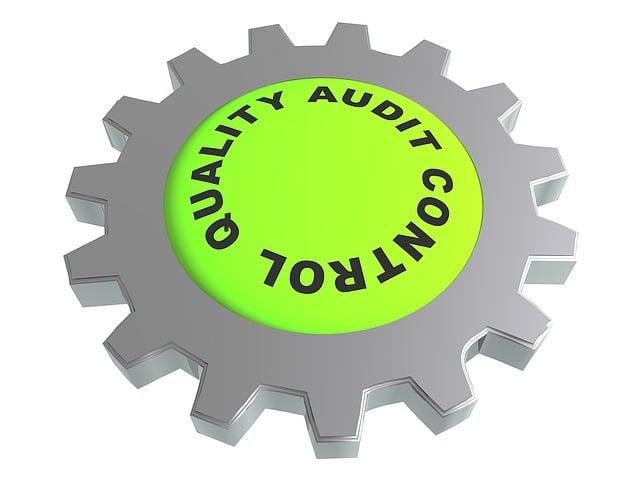A thorough SEO audit analyzes keywords, content, backlinks, site speed, and technical aspects to understand website performance. Using tools like Ahrefs, SEMrush, Google Search Console, and Moz Pro, businesses identify strengths and weaknesses, optimize for search engines, and drive organic traffic. This process includes keyword research, competitor analysis, analytics interpretation, and strategic optimizations to enhance online visibility and stay competitive.
SEO ranking analysis is a crucial process for any business aiming to thrive online. Understanding how search engines evaluate websites empowers marketers to optimize content and structure, driving higher rankings. This comprehensive guide delves into the intricacies of a SEO audit, exploring key factors, essential tools, and strategic improvements. From on-page optimization to keyword performance and competitor analysis, learn how to interpret data and enhance your site’s visibility in today’s competitive digital landscape.
Understanding SEO Ranking Analysis

Understanding SEO ranking analysis involves delving into the factors that influence a website’s position in search engine results pages (SERPs). It’s a comprehensive process that mirrors an SEO audit, examining various elements from keywords and content to backlinks and site speed. By analyzing these aspects, businesses can identify areas of strength and weakness, enabling them to optimize their digital presence effectively.
This analysis provides valuable insights into how search engines crawl and rank websites, helping businesses craft strategies to improve visibility and drive organic traffic. It involves researching keyword performance, evaluating on-page optimization, assessing the quality and quantity of backlinks, and analyzing technical aspects like site structure and mobile-friendliness. With these data points, businesses can make informed decisions to enhance their SEO efforts and stay competitive in their respective industries.
Key Factors in SEO Audit Process

A comprehensive SEO audit process involves a meticulous examination of various factors that influence search engine rankings. This critical analysis delves into understanding user behavior, website performance, and technical aspects unique to each online platform. By evaluating keywords, content quality, and on-page optimization, experts can identify areas for improvement.
The key factors include analyzing keyword research for relevance and competition, assessing site structure and navigation for ease of use, examining page load speeds, optimizing meta titles and descriptions, ensuring mobile-friendliness, and checking for technical issues like broken links or indexation problems. These aspects collectively contribute to a website’s visibility and ability to attract organic traffic, making them essential considerations in any SEO audit.
Tools for Comprehensive Analysis

Performing a comprehensive SEO audit is essential for understanding your website’s performance and identifying areas for improvement. There are numerous tools available that facilitate this process, offering in-depth analysis and valuable insights. These range from all-in-one SEO platforms like Ahrefs and SEMrush to more specialized applications such as Google Search Console and Moz Pro.
Each tool provides unique features, catering to different aspects of an SEO ranking analysis. For instance, Google Search Console offers insights into search performance and index coverage, while Ahrefs excels in backlink profiling and keyword research. Integrating these tools allows for a holistic view of your website’s visibility, content quality, and technical health, ultimately guiding strategic optimizations to boost search engine rankings.
Assessing On-Page Optimization

Conducting an SEO audit is a crucial step in assessing on-page optimization for any website. This process involves meticulously examining various elements that directly impact search engine rankings. By analyzing key metrics, such as page load speed, mobile-friendliness, and the quality of content, businesses can identify areas that require improvement. An effective SEO audit provides valuable insights into the current state of a site’s visibility and offers actionable recommendations to enhance its online presence.
During this evaluation, web developers and marketers should pay close attention to title tags, meta descriptions, header structures, and internal linking. Ensuring these components are optimized with relevant keywords can significantly boost search rankings. Additionally, checking for proper use of alt tags on images and optimizing URL structures contributes to a comprehensive on-page SEO strategy that not only improves search engine visibility but also enhances the overall user experience.
Examining Technical SEO Issues

When conducting an SEO audit, examining technical SEO issues is a critical step. These problems can hinder your website’s visibility and performance in search engine results pages (SERPs). Common technical SEO issues include crawl errors, broken links, slow page loading times, mobile-unfriendliness, and XML sitemaps that are not properly structured. A thorough audit involves using tools to identify and fix these issues, ensuring that search engines can efficiently access and index your website’s content.
Focusing on these aspects improves the overall user experience and signals to search engines that your site is reliable and valuable. Fixable technical SEO problems, when addressed, can quickly boost your rankings and drive more organic traffic to your website. Therefore, a comprehensive SEO audit should always include an in-depth analysis of your site’s technical health.
Analyzing Keyword Performance

Analyzing keyword performance is a crucial aspect of any comprehensive SEO audit. By examining how your website ranks for specific search terms, you gain valuable insights into the effectiveness of your content strategy and overall online visibility. This process involves tracking keyword positions over time, identifying trends, and understanding user search behavior.
During an SEO audit, professionals delve into tools that provide detailed data on keyword rankings, click-through rates, and conversion metrics. This allows them to pinpoint areas where optimization is needed—whether it’s refining content for better relevance or adjusting meta tags to increase clickability. Regularly monitoring keyword performance not only helps in improving search engine rankings but also ensures your website remains aligned with the evolving preferences of your target audience.
Competitor Benchmarking

Competitor benchmarking is a crucial aspect of any comprehensive SEO audit. By analyzing your competitors’ online strategies, you gain valuable insights into what works and what doesn’t in your industry. This process involves scrutinizing their website content, keyword usage, backlink profiles, and overall search engine optimization techniques. Understanding these elements helps you identify gaps in your own strategy and sets a baseline for improvement.
During this analysis, pay close attention to their ranking positions for relevant keywords. Tools like Google Search Console or SEMrush can assist in gathering data on competitors’ performance. This information allows you to make informed decisions about content optimization, link building, and other SEO efforts, ultimately aiming to outrank your rivals and improve your search engine visibility.
Interpreting Analytics Data

When conducting an SEO audit, interpreting analytics data is a critical step in understanding your website’s performance and identifying areas for improvement. This process involves delving into metrics such as traffic sources, user behaviour, and conversion rates. By analysing these figures, you can uncover valuable insights about what’s working well on your site and what needs refining. For instance, tracking organic search traffic reveals keyword rankings and page performance, helping you optimise content for better search engine visibility.
Moreover, understanding user behaviour through analytics provides a glimpse into customer preferences and pain points. You can assess bounce rates, time spent on pages, and click-through rates to gauge user engagement. High bounce rates might indicate problems with site navigation or content relevance, prompting you to make data-driven decisions during your SEO strategy revision. Effective interpretation of these analytics data points allows for a strategic approach to enhancing search engine rankings and delivering a better user experience.
Strategies to Improve Rankings

To boost your website’s SEO ranking, start by conducting a comprehensive SEO audit to identify areas for improvement. This involves evaluating your site’s technical health, keyword usage, content quality, and link profile among other factors. Tools like Google Search Console and SEMrush can assist in this process by providing insights into your site’s performance and suggesting optimizations.
Next, focus on creating high-quality, keyword-rich content that resonates with your target audience. Optimize meta titles, headers, and descriptions while ensuring a seamless user experience across all devices. Additionally, build a robust internal linking structure to enhance crawlability and distribute page authority throughout your site. Engaging in regular backlink analysis can also help attract quality backlinks, further bolstering your search engine rankings.
